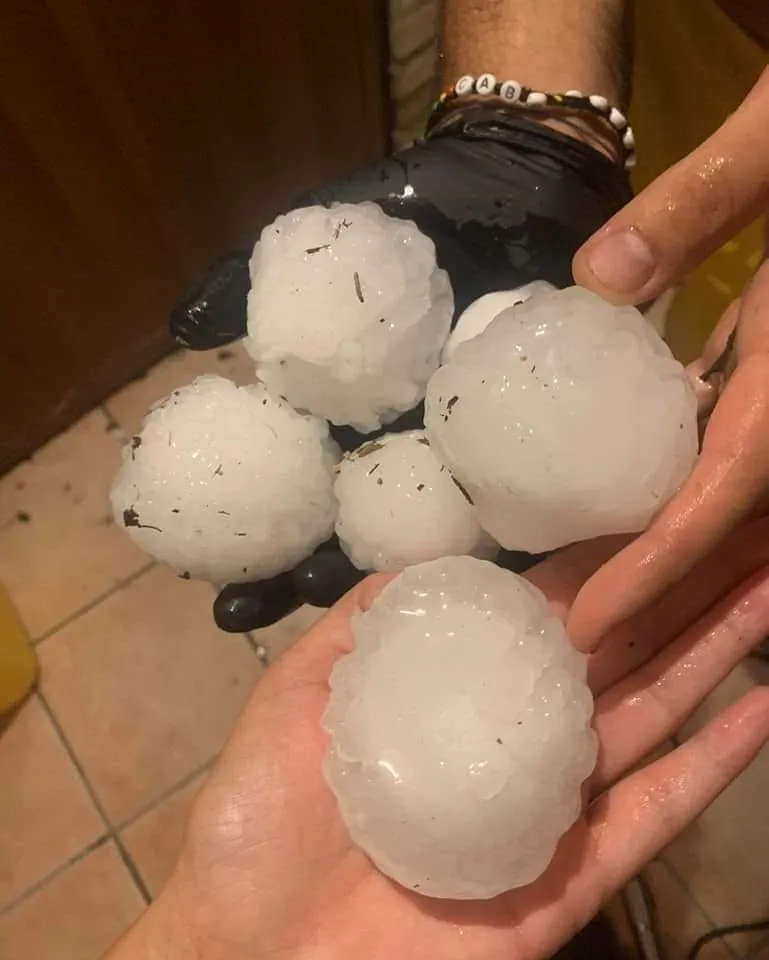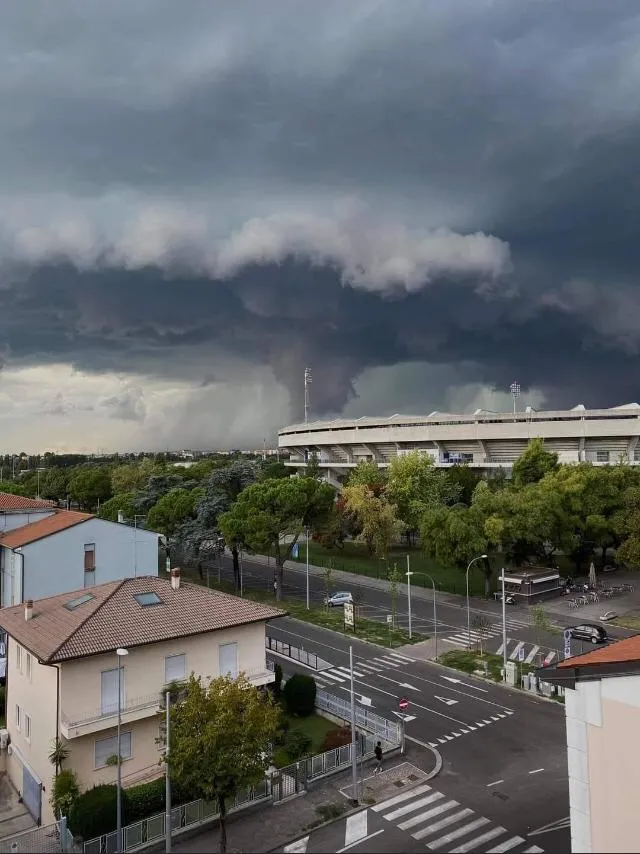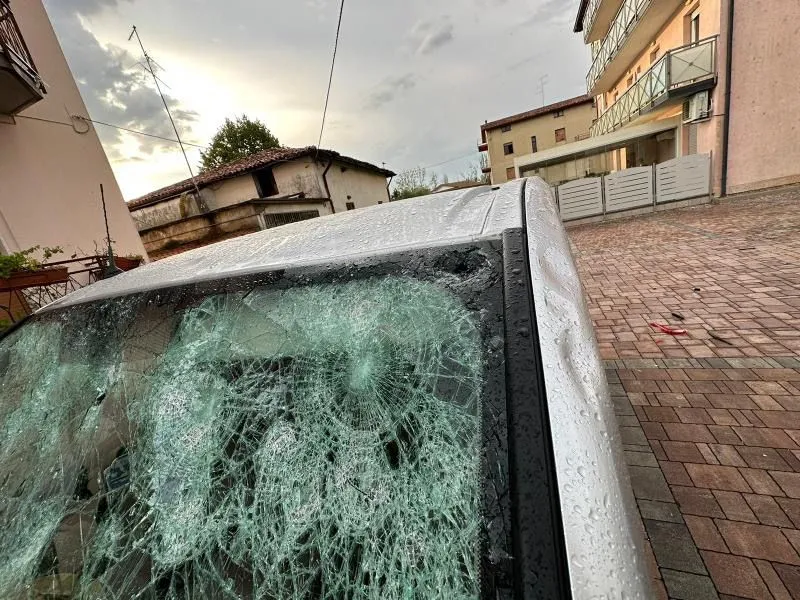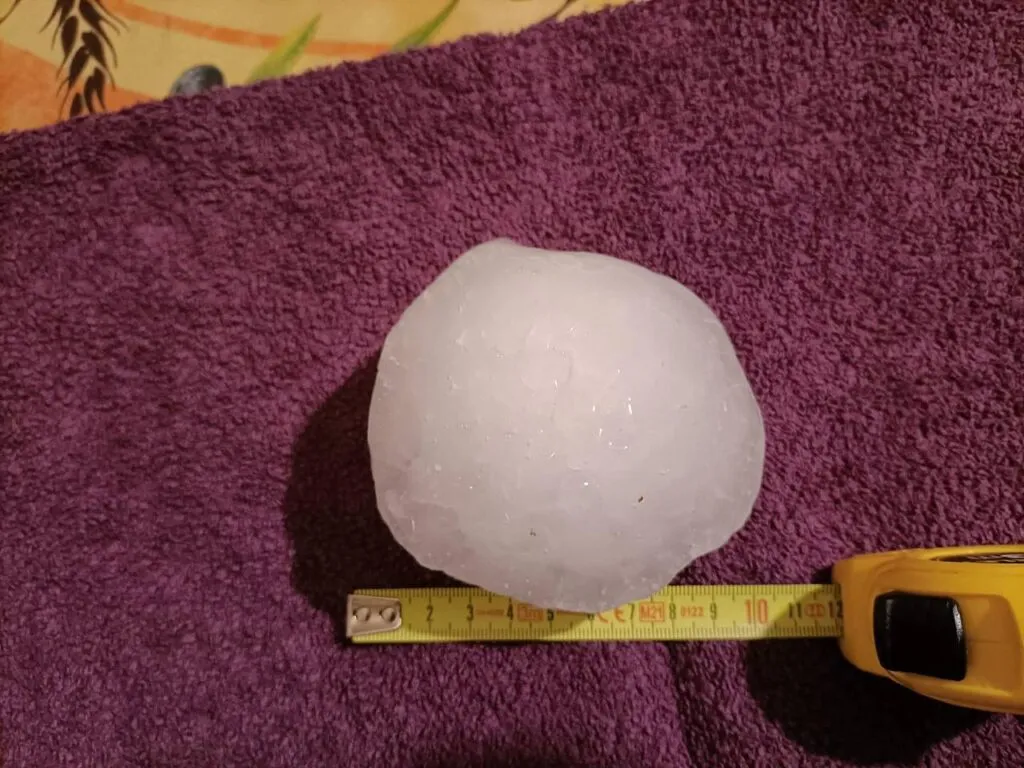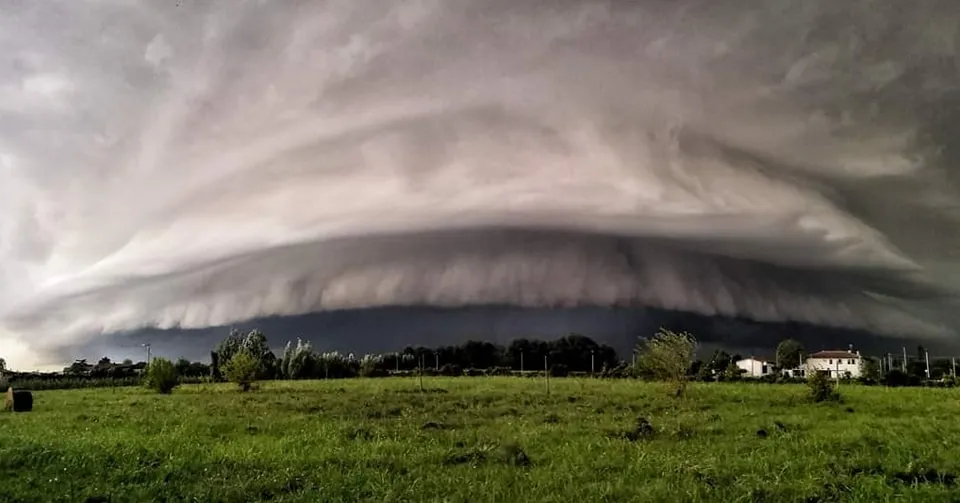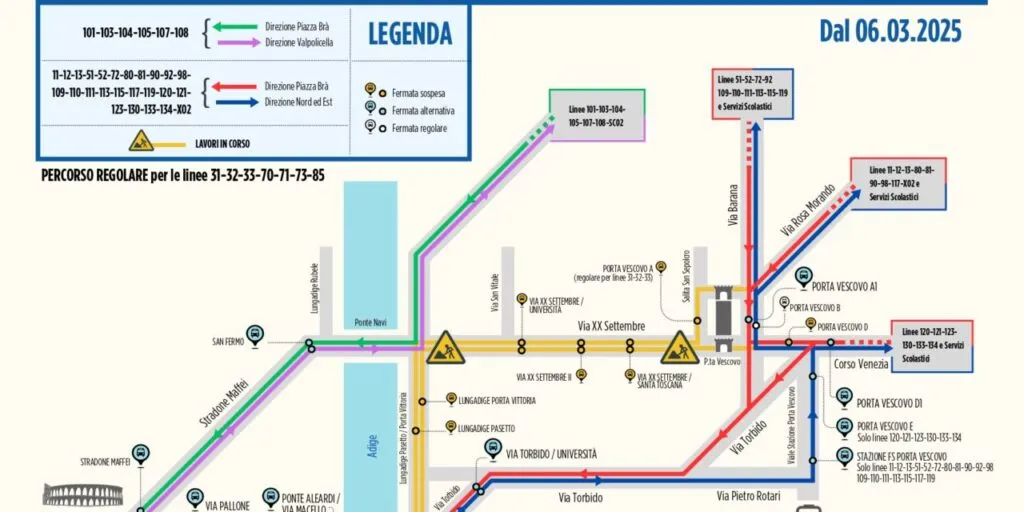(by Elisabetta Gallina) The worst days of bad wheather, which many Veronese and Venetians will never forget, were 24 and 25 July. But every other evening, eyes were always on the dark clouds in the sky. As predicted by the meteorologists, the bad weather did not spare the Verona area. Violent thunderstorms crossed the the province of Verona from west to east, from the mountains to the plains: very strong gusts of wind and rain, preceded by a real storm of lightning. A person was struck by lightning near Verona Porta Nuova station (fortunately alive without consequences) after taking shelter under a tree.
The damage was caused by hail, which in some places reached the size of tennis balls. In Peschiera, for example, dozens of people had to be taken to hospital and many cars destroyed. Others were stuck in their cars on roads blocked by fallen trees, or in their homes damaged by fallen branches. Many accommodation facilities and tourist attractions had to be closed for repairs, including Gardaland and the zoologic park of Verona, Parco Natura Viva.
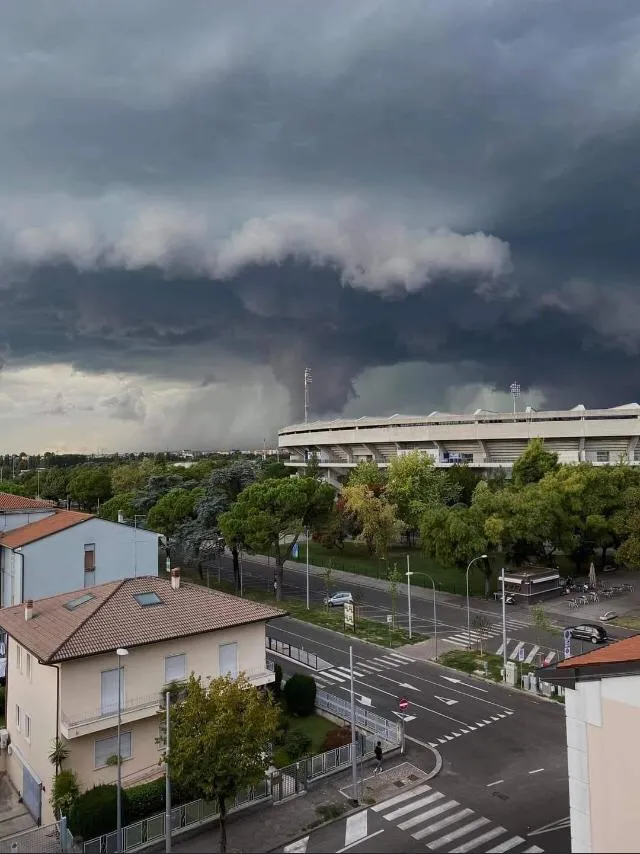
Until 3 August to register weather damage
Following the exceptional atmospheric events that hit the territory of our province, as indicated by the Veneto Region in a specific communication received, the Municipality of Verona is collecting reports of damage to private property and productive activities.
Anyone who is the owner of private buildings or registered movable property or the owner of productive and economic activity and has suffered damage from the storms that have occurred in recent weeks may send a communication via certified mail (called also “pec”) to the following address protocollo.informatico@pec.comune.verona.it, attaching photographic documentation and a possible estimate of the same by 12 noon on 3 August. This is to enable the offices to draw up an overall estimate of the damage.
Subsequently, the forms, prepared by the Veneto Region, will be made available for submitting the application for compensation.
The Civil Protection offices are available for information at the following telephone numbers: 045.8052112 – 113.
Extreme caution is recommended throughout the week, bearing in mind the main recommendations in case of bad weather
In the case of… thunderstorms
To defend oneself against a severe thunderstorm, one must first predict its arrival, and understand how far away it is from us. There are some radar platforms on the net that are able to indicate the most probable time for a storm to break out.
It is also advisable to analyse the phenomena we are facing: if we only see lightning, the storm is probably tens of kilometres away, while if there is also thunder, we are only a few kilometres away. In any case, during a thunderstorm it is best not to stand under trees.
In case of…lightning
In the event of lightning, the place most at risk is in an open field. If you are in the mountains, you should immediately descend in altitude, avoiding peaks or ridges, as well as nets or metal fences.
Wherever you are, keep a good distance from trees, light poles and pylons – the tallest objects. If you really cannot find shelter, you should keep your feet together to defend yourself, minimising contact with the ground. Do not lie down or sit on the ground.
If exposed to lightning, the best position is to crouch with your feet together, holding your legs with your arms. If there is more than one person, the distance to be maintained from each other is about ten metres to avoid being a conductor.
In case of…hail
If you come across a strong – and sudden – hailstorm, the best thing is to find a structure where you can take shelter. Indeed, if the hailstones are large, as is often the case lately, they can cause head injuries. However, hailstorms have a time limit: they can last a maximum of ten minutes.
In case of…tornadoes
When a tornado or waterspout is seen in the distance, the first thing to do is to move away from the path of the phenomenon. In addition, you should seek shelter and not stand outdoors: you could be hit by tiles or pots carried by the gust of wind. Falling trees or fences are also a danger, as are mobile structures (scaffolding, gazebos and tents).
If you are indoors, you should close doors and windows, and preferably stay on high floors – but not on the top floor, where you are at risk due to the proximity of the roof, which could fly off. In the case of particularly violent tornadoes, shutting off gas and electricity is also a good idea, and finally securing objects on windowsills or balconies.
